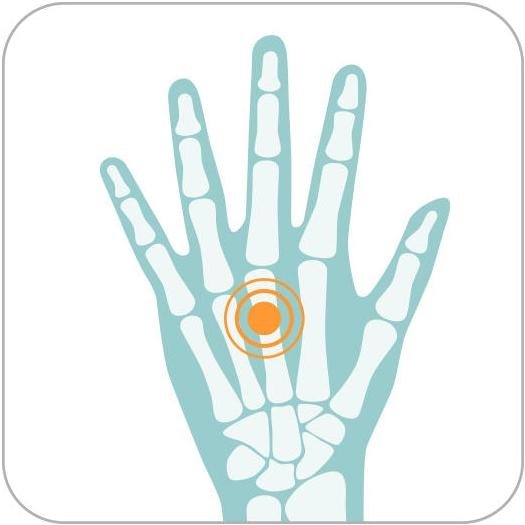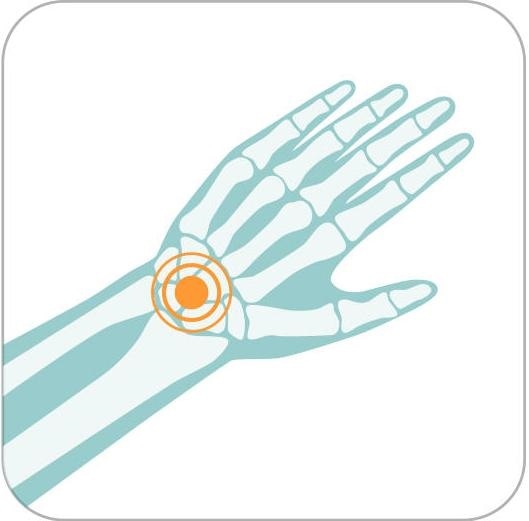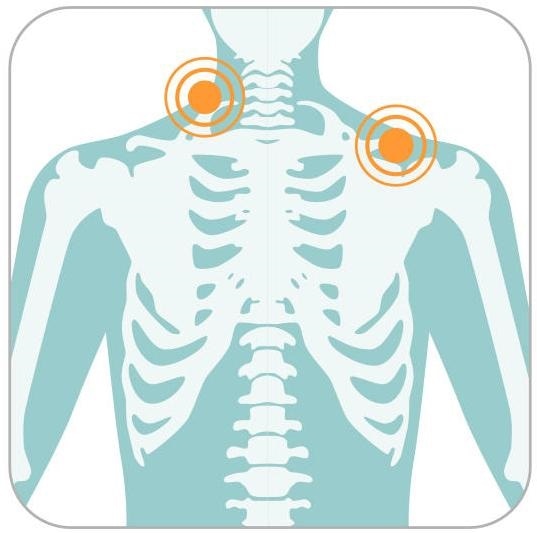If you are someone who needs to mobilize and stretch your wrist muscles after manually pipetting into a 96 or 384 well plate, then throughout plate set-up you are fully concentrated on dispensing the correct sample into the correct well. Only after the last sample do you realize that your thumb and wrist are strained.
If you spent an hour sat at a laminar flow cabinet pipetting stacks of cell culture plates that needed to be passaged or fed, then once all of the plates were back in the incubator, you probably stretched your back to loosen the muscles that had tensed while you were working. You will have noticed your colleagues complaining about it even if you are lucky enough to be pain-free.
The evidence that an awkward posture or repetitive pipetting can result in pain is supported by studies which report a significant increase in the risk of developing musculoskeletal problems when pipetting for over 300 hours in a year.1
Pipetting for an hour or two a day results in a heightened risk of injury, this is assuming you work between 180 and 200 days a year. This data is 25 years old, and evolution hasn’t altered our bodies during this time, but a lab technician’s workloads and sample throughputs have grown.
Although automation is more common than before, regardless, pipetting for over two hours is still usual. Additionally, in the modern lab, when you are not pipetting you are sitting in front of a computer.
RSI, WRULD, MSD, CTD
There several different abbreviations and terms in the subject of ergonomics (see glossary). Essentially, they all refer to pain in the neck, hands, and shoulders which is caused by repetitive and prolonged movements.
For example, while WRULDs are conditions of the upper body that are caused by activities performed during the working day, RSIs cover a scope of health problems as a result of highly repetitive, frequent actions. Classic examples of conditions caused by repeated exposure to ergonomic hazards include tendonitis, tenosynovitis, carpal tunnel syndrome, and tennis elbow.
What Causes RSIs During Pipetting?
The likelihood of developing an RSI is dependent on several risk factors; the higher the exposure to one or more risk factors, the higher the risk. This is particularly true for prolonged manual pipetting processes, where lab workers experience all of the major risk factors.
Posture
Pipetting is done sitting at the lab bench in many labs. It is vital to keep your head and shoulders aligned and your back straight whenever possible, at the same time keeping your shoulders relaxed, just as you would sitting in front of your computer.
Your legs should be beneath the lab bench and your feet flat on the floor or a footrest, if necessary. Organize your workplace so that all your labware and reagents are closeby to avoid stretching, and preferably, your arms should be kept close to your body.
Unfortunately, the reality is that awkward body postures can be observed in many labs daily, with some lab workers holding their tubes and pipettes at eye level, standing while pipetting, or sitting crouched in front of a laminar flow cabinet for hours at a time.
Also, lab tools like pipettes must be lifted up to be used. The weight of the pipette influences how you hold it, its size, and the positioning of components – including the tip ejection, plunger, and volume change mechanisms – establish if it can be held ergonomically or not.
Repetition
It is well-known that precise and accurate pipetting can be challenging, demanding a number of highly monotonous movements: attach the tip(s) to the pipette; depress the plunger with the thumb; move to the source liquid; raise thumb to aspirate; move to the target; depress the plunger with the thumb to dispense; and, lastly, eject the tip. These movements are repeated several hours a day, and several days a week, over and over again.
Force
The plunger is thumb-operated with manual pipetting, permitting liquids to be aspirated and dispensed in a controlled manner, with the extra force required to ensure all the liquid is dispensed. The thumb force is increased further when pipetting high viscosity liquids.
Force is also required to pick up a pipette and to hold it in an upright position throughout utilization, stabilizing the handgrip with the help of the thumb muscles.2 The weight of the pipette adds to these forces.
RSIs Impact Your Health
Many lab workers are passionate about both the tools they work with and their profession. A working environment that has an effect on your health and consequently, your leisure time, is probably not worth it when little changes are all it takes in your lab processes to circumvent any ergonomic hazards.
Adapting your working environment early can prevent later problems, even if you are lucky enough to be pain-free right now. Talk to your employer, in a lot of countries, employers are legally obliged to evaluate the RSI risk of each workspace by performing a Risk Assessment Test.3
All employers want to have healthy staff who are in the lab, not with the physiotherapist or doctor. So be confident, the ergonomic enhancements in your lab workflow will be appreciated by your employer and your colleagues.
Listen to Your Body
The first symptoms of an RSI include aching, pain, numbness, stiffness, throbbing, tenderness, tingling, weakness, and cramping of the neck, wrist, hand, shoulder, or thumb. If you recognize any of these early symptoms, begin with trying to pinpoint the repetitive motion which is causing the pain. Avoid this motion in the future if possible, or adapt your process.
If the pain carries on even without doing the repetitive motion, see a doctor, as treatment will be needed. RSIs can be treated using several methods, depending on the symptoms, from steroid injections and pain killers to physiotherapy. It could be necessary to take sick leave until the pain subsides in severe cases.
The time it takes to recover from an RSI varies. RSIs develop over a long period and, sadly, it can take a long time to get rid of them. Unfortunately, once you have been severely affected by an RSI, recurrence risk is high. It could result in long-term disability if the problem is ignored.
The graphic below shows some of the preventive measures that you can use in your lab processes to avoid any RSI pipetting issues.

Thumb
Problem
Manual pipettes need force to depress a plunger, which can cause issues such as thumb tenosynovitis. Manual tip ejection can result in the same condition if the ejection force is too high.
What Can You Do?
Choose a manual pipette with minimal plunger force and stroke distance. Electronic pipettes are perfect as the plunger is controlled by a microprocessor, which requires minimal thumb movement. Utilize tips which require the smallest ejection force possible for removal.
Integra Solutions
- VIAFLO/VOYAGER electronic pipettes have an intuitive thumbwheel design and one-button plunger control. Press the button to aspirate and dispense using zero force.
- EVOLVE manual pipettes are lightweight with low plunger force.
- The VIAFLO 96/384 electronic pipette dramatically lowers the time spent pipetting and supplies a computer-controlled plunger and electronic tip ejection.
- GripTip pipette tips have the lowest ejection forces on the market.
- The ASSIST pipetting robots automate handheld electronic pipettes, to eliminate repetitive manual tasks.

Hand
Problem
Hammering on tips can result in long-term hand pain. Furthermore, gripping the pipette too tightly for extended periods can result in nerve damage and potentially, carpal tunnel syndrome.
What Can You Do?
Select a pipette with a finger hook to rest your hand, and low tip loading forces to decrease the requirement to hammer on tips. Do not grip the pipette too tightly.
Integra Solutions
- The ASSIST PLUS pipetting robot has automatic tip loading and takes the pipette from the hands of the user.
- EVOLVE manual pipettes, and VIAFLO/VOYAGER electronic pipettes, employ GripTips, which snap effortlessly onto the tip with no hammering needed.
- EVOLVE manual pipettes have low plunger force and are lightweight.
- The VIAFLO 96/384 electronic pipette reduces the time spent significantly, by pipetting dispensing/mixing an entire plate at a time, in addition to providing electronic tip loading.

Wrist
Problem
Twisting and turning the wrist too frequently and too much can result in muscle injuries. Bending the wrist is particularly problematic, as it puts it in an unnatural position.
What Can You Do?
Choose a pipette that permits easy volume changes and keeps the wrist in a neutral position. Pipette handles that can be rotated aid with this, letting the user select the most comfortable position for them.
Integra Solutions
- So the user can identify the most comfortable position for them, VIAFLO/VOYAGER electronic pipettes have handles which can be turned. Volume alterations are done very easily by utilizing a comfortable thumbwheel.
- The VIAFLO 96/384 electronic pipette may be operated in automatic mode, decreasing the hands-on time and wrist movements required.
- EVOLVE manual pipettes employ three separate dials for straightforward volume changes, avoiding the usual approach of twisting the plunger. This permits fast volume alterations that do not affect the wrist.
- The ASSIST pipetting robots automate handheld electronic pipettes, eradicating the need to move the wrist. All liquid handling tasks and volume changes are performed using a simple-to-use program.

Neck and Shoulders
Problem
Pipetting over prolonged amounts of time results in the shoulders and neck being hunched forward. Generally, bad posture when pipetting can lead to strains and restrict blood flow to the muscles. An awkward posture is often associated with working in a laminar flow air cabinet.
What Can You Do?
Sit in the middle of your chair/stool with your back straight. The head should be directly above the shoulders and the shoulders in line with the hips. Be aware of your posture.
Integra Solutions
- During the pipetting process, the VIAFLO 96/384 electronic pipette lets you keep your neck in an upright position and your shoulders relaxed. The motor assistance for moving the pipetting head permits an effortless workflow, while the electronic tip positioning guarantees optimal targeting of the wells without visual control.
- The ASSIST pipetting robots solve posture issues completely by removing the requirement for manual pipetting.

Elbow
Problem
Lateral epicondylitis, also known as Tennis elbow, can happen when pipetting over long periods, particularly when the elbow must be fully extended. Resting the elbow on a hard surface while pipetting can compound the problem.
What Can You Do?
Keep labware as close to the pipetting area as possible and don’t fully extend the elbow.
Integra Solutions
- The VIAFLO 96/384 electronic pipette can be automated to aid in pipetting processes and is designed in such a way that the elbow is never extended fully.
- By automating handheld electronic pipettes, the ASSIST pipetting robots eliminate elbow problems, removing the need for manual pipetting.
Glossary
| RSI |
Repetitive strain injury |
| WRULD |
Work-related upper limb disorder |
| MSD |
Musculoskeletal disorder |
| CTD |
Cumulative trauma disorder |
References and Further Reading
- Björkstein MG et al. 1994. Hand and shoulder ailments among laboratory technicians using modern plunger-operated pipettes. Appl Ergon 25(2), 88-94.
- Wu JZ et al. 2014. Analysis of the musculoskeletal loading of the thumb during pipetting – A pilot study. J Biomech 47(2), 392–399.
- https://osha.europa.eu/en/tools-and-publications/publications/factsheets/80
About INTEGRA
 INTEGRA provides innovative solutions for Liquid Handling and Media Preparation applications which serve the needs of their customers in research, diagnostics and quality control laboratories.
INTEGRA provides innovative solutions for Liquid Handling and Media Preparation applications which serve the needs of their customers in research, diagnostics and quality control laboratories.
Their instruments and plastic consumables are developed and manufactured in Zizers, Switzerland and Hudson, NH USA. In order to remain close to their customers, they maintain a direct sales and support organization in North America, the UK, France and Germany, as well as a network of over 100 highly trained distribution partners worldwide.
In recent years they have focused on developing a new and technologically advanced range of handheld electronic pipettes which are simple to use and meet the ergonomic needs of their customers.
Today they are proud to offer the widest range of electronic pipettes in the market spanning a range from single channel pipettes up to 384 channel bench-top instruments.
Sponsored Content Policy: News-Medical.net publishes articles and related content that may be derived from sources where we have existing commercial relationships, provided such content adds value to the core editorial ethos of News-Medical.Net which is to educate and iform site visitors interested in medical research, science, medical devices and treatments.